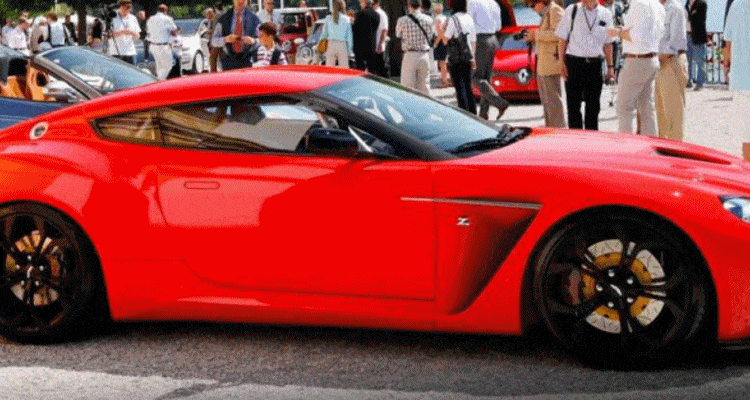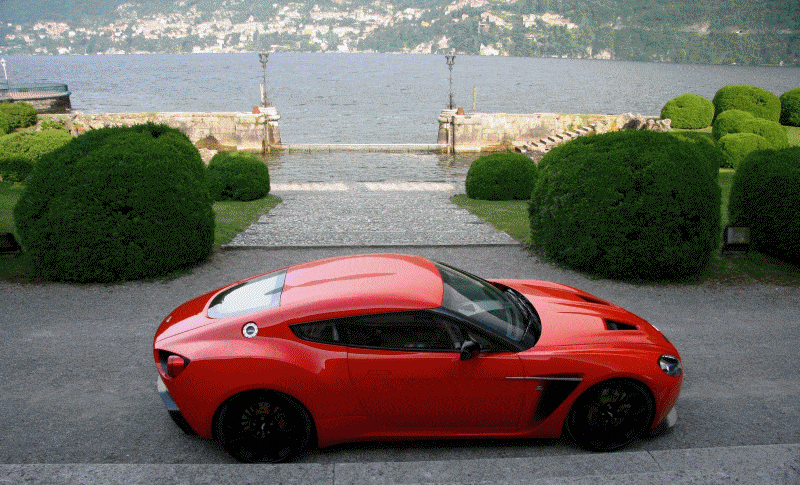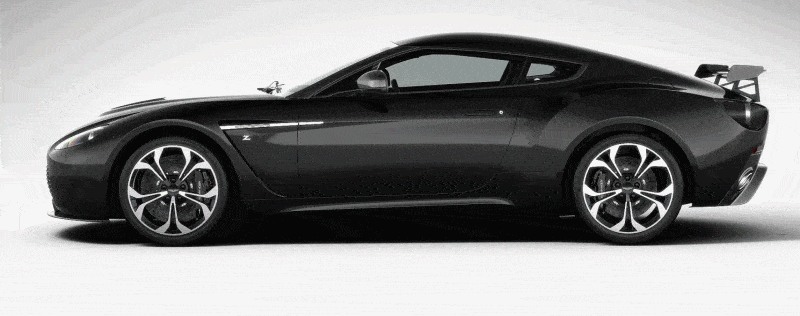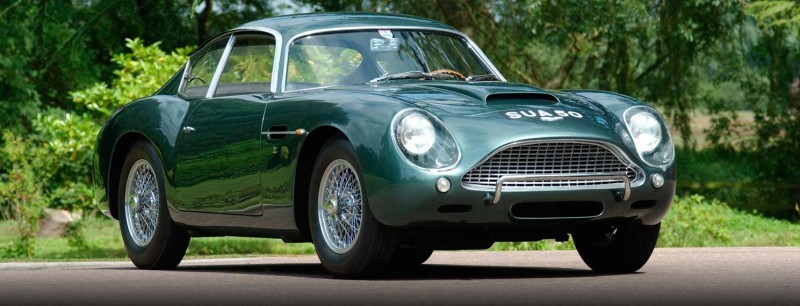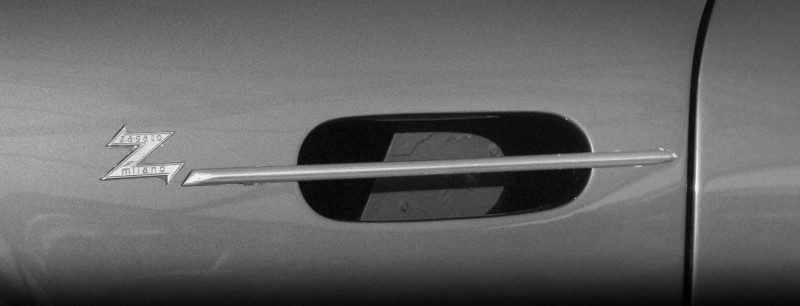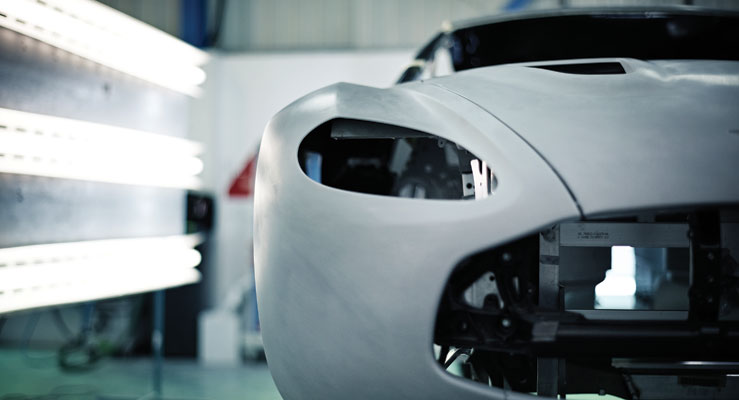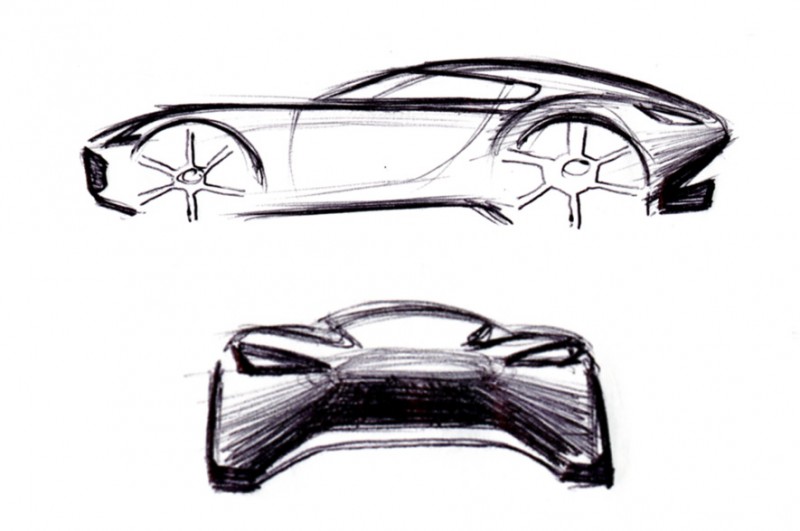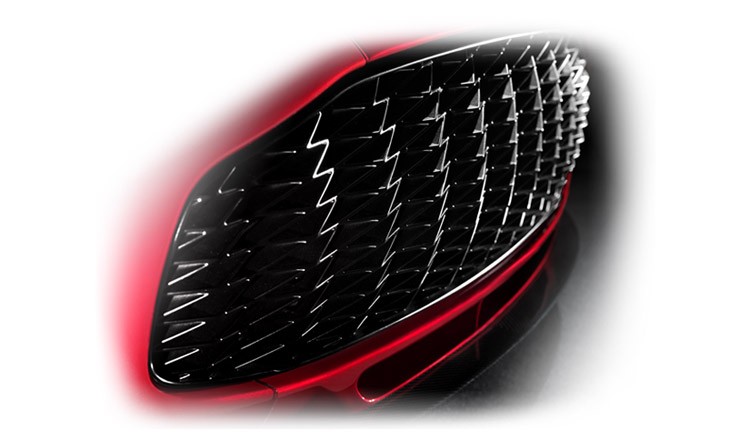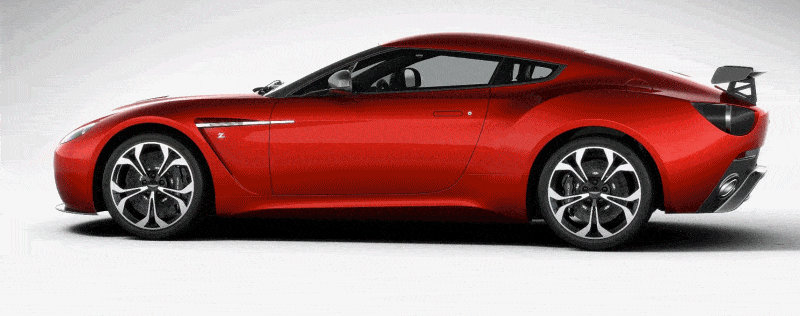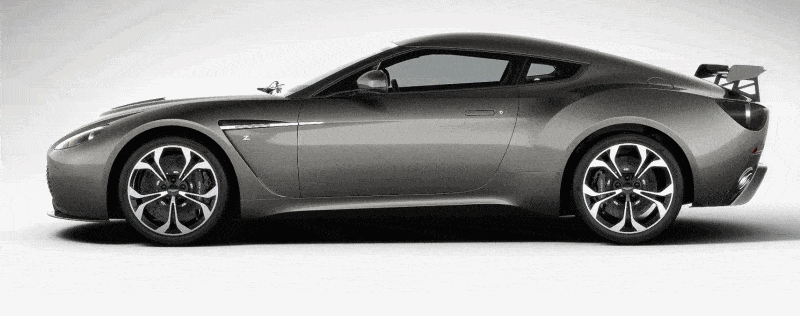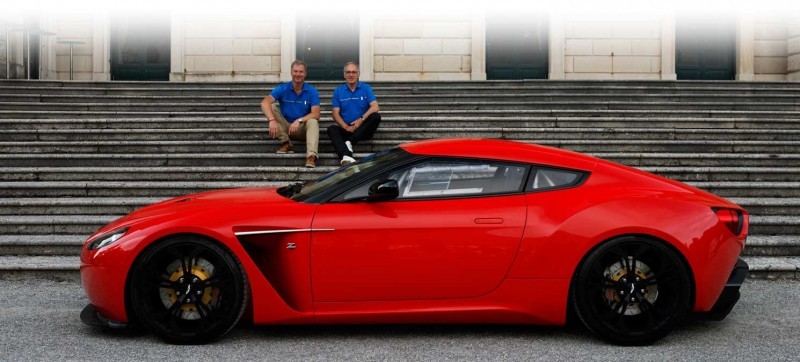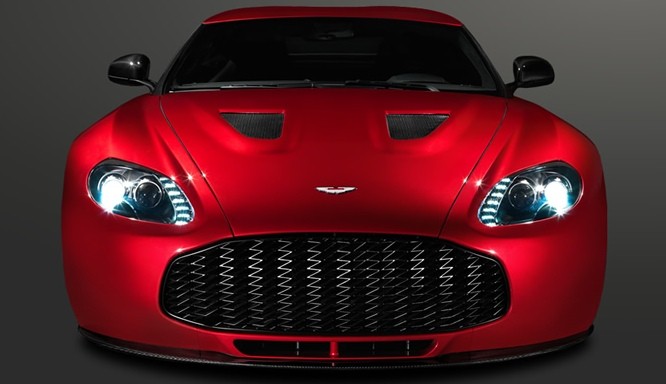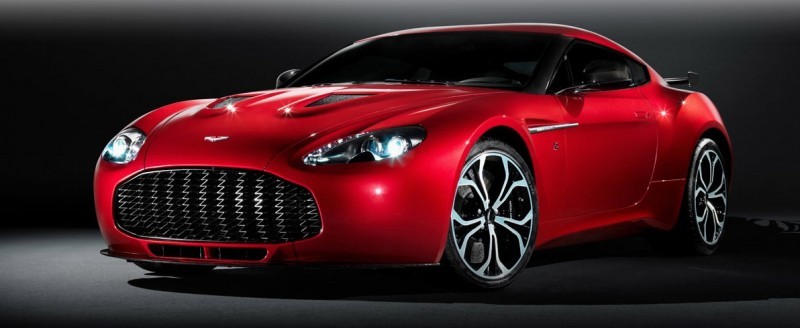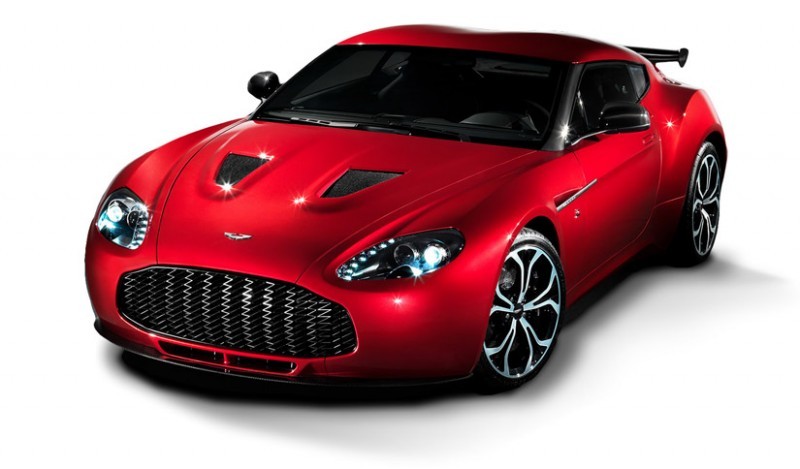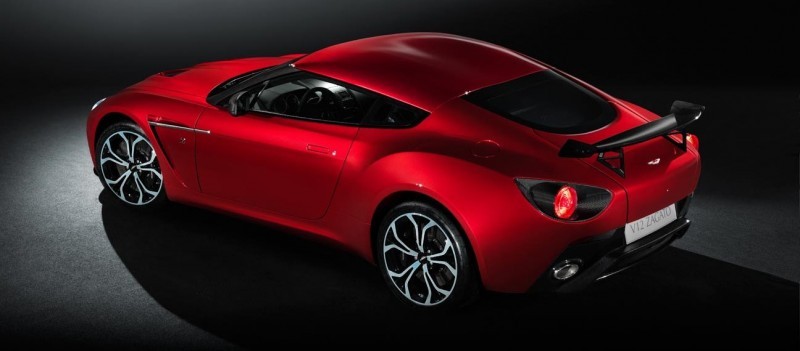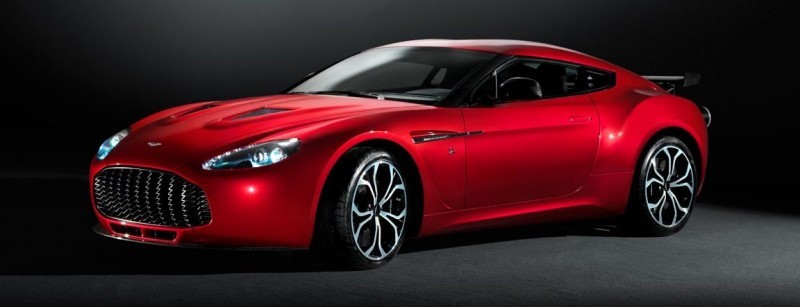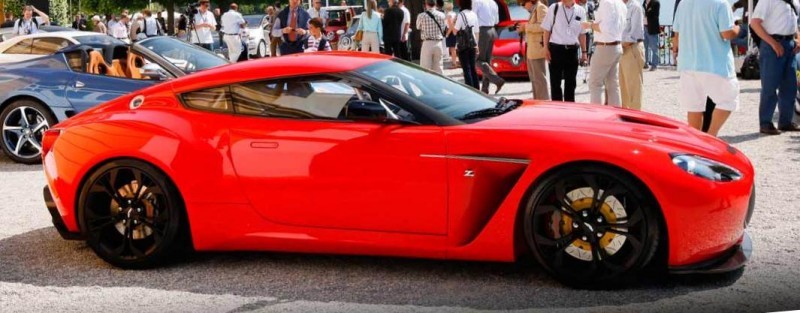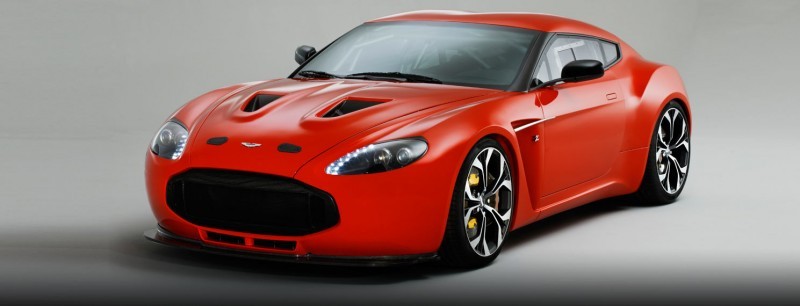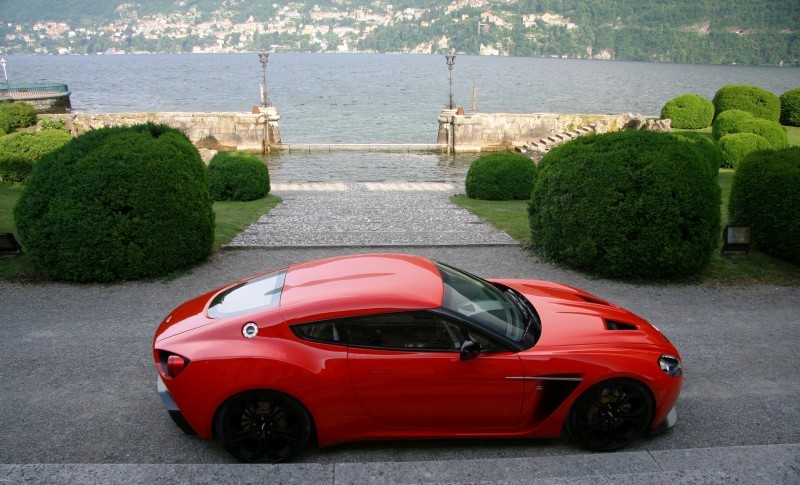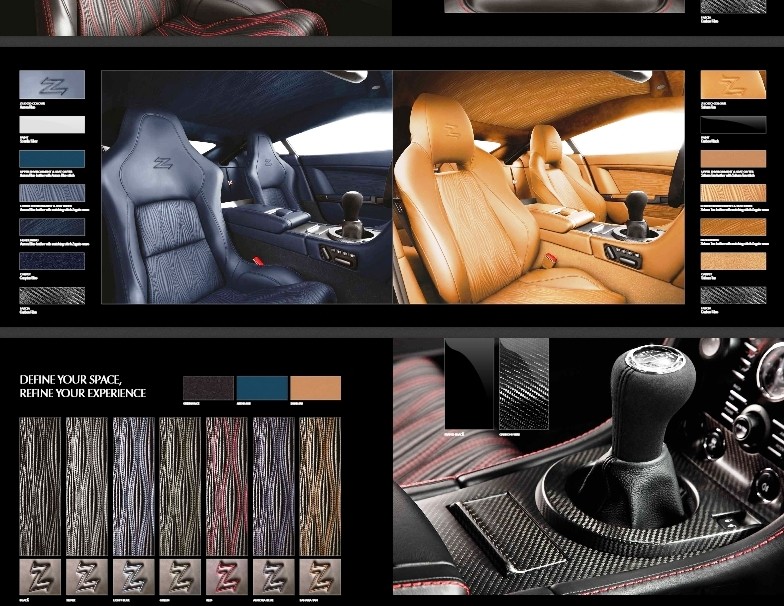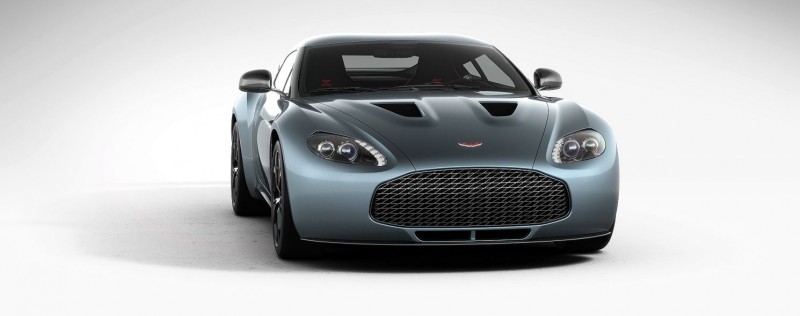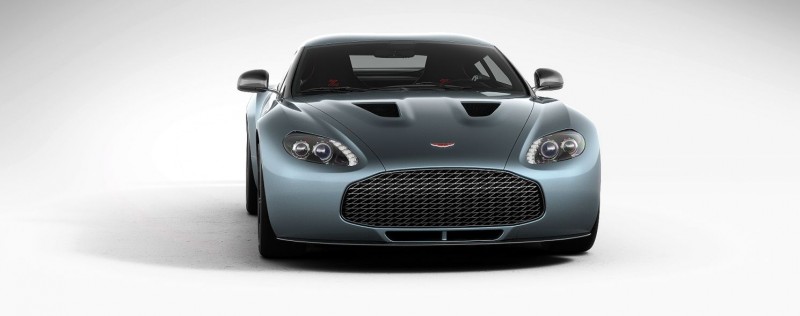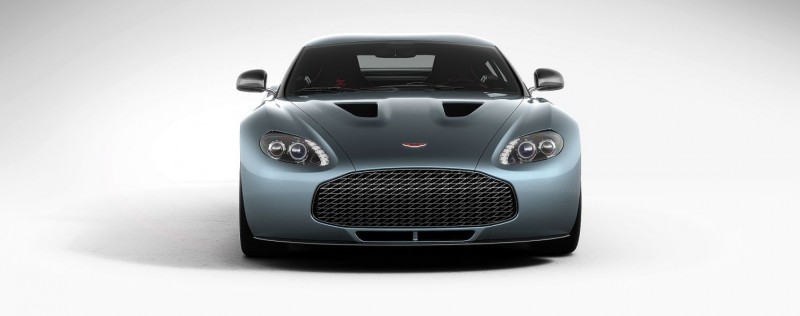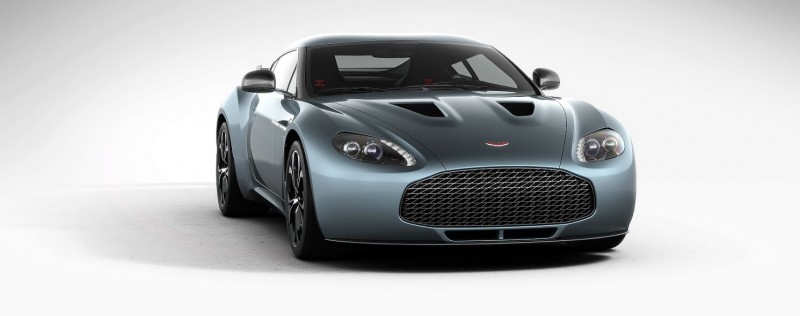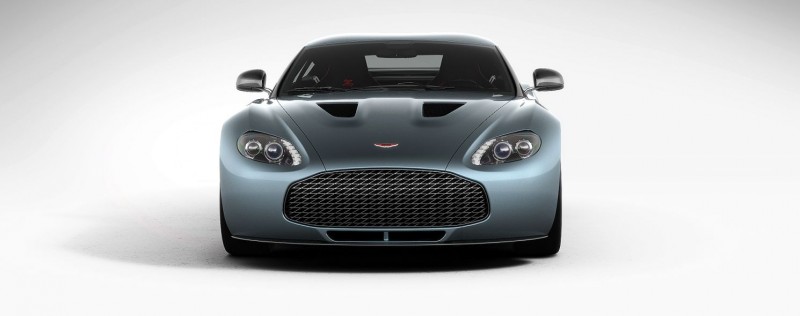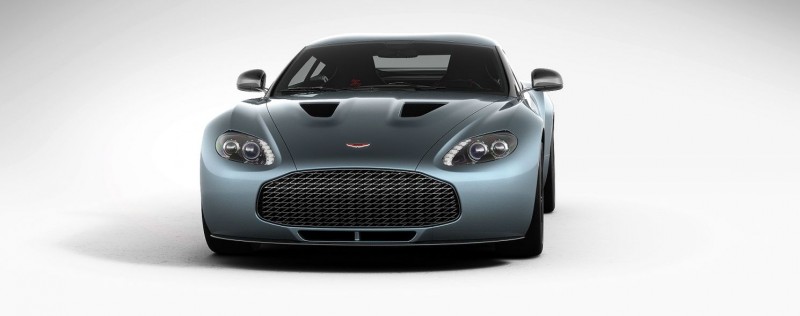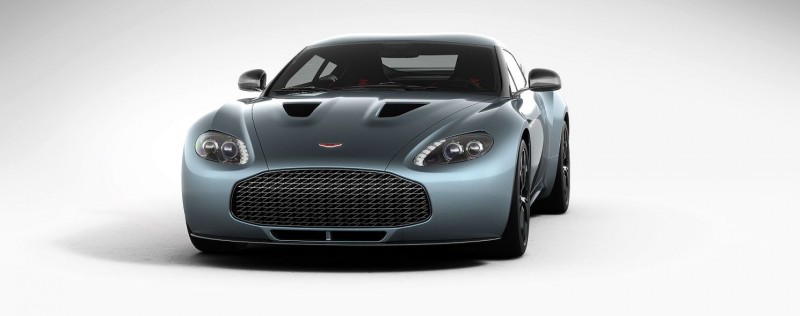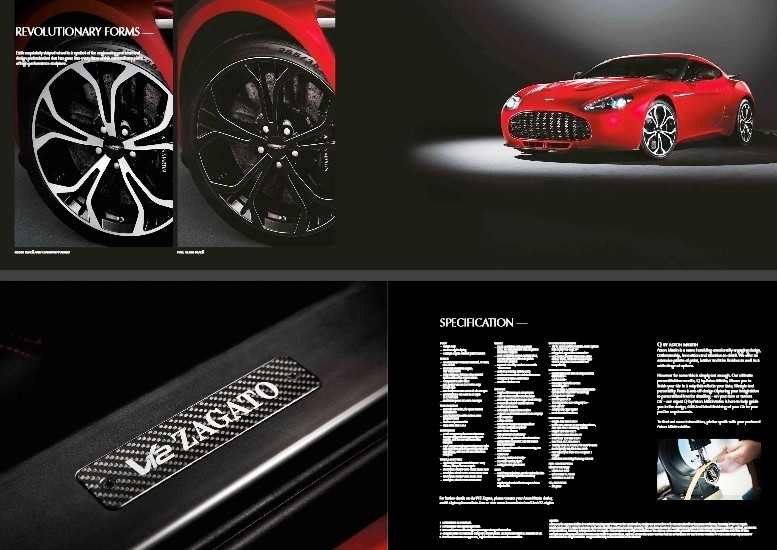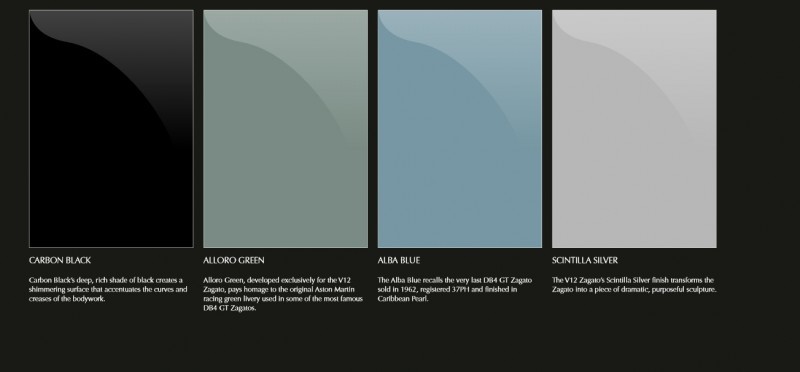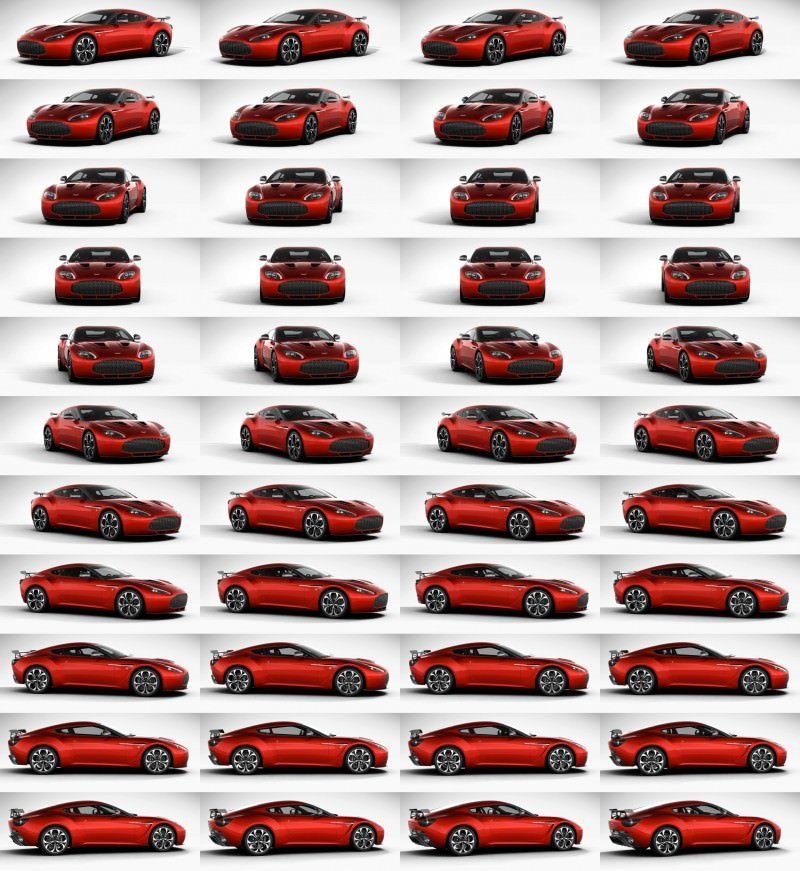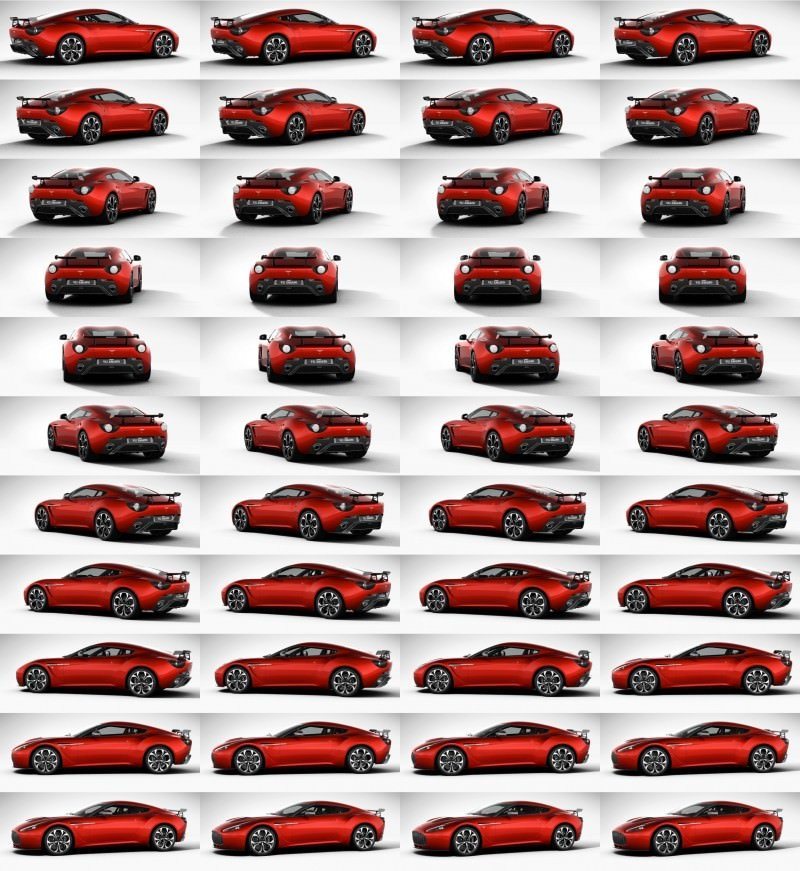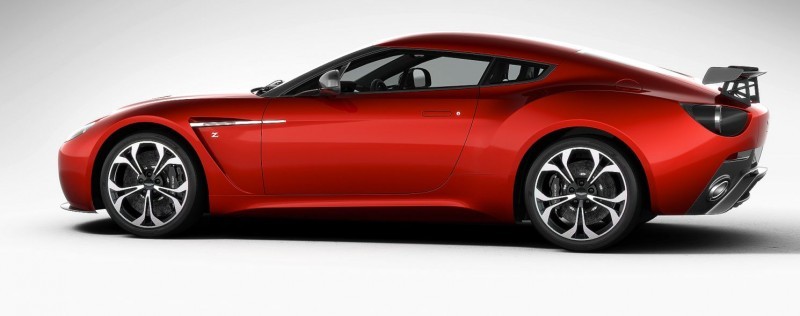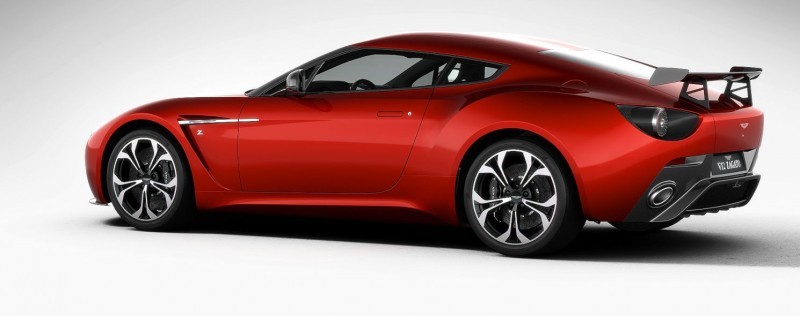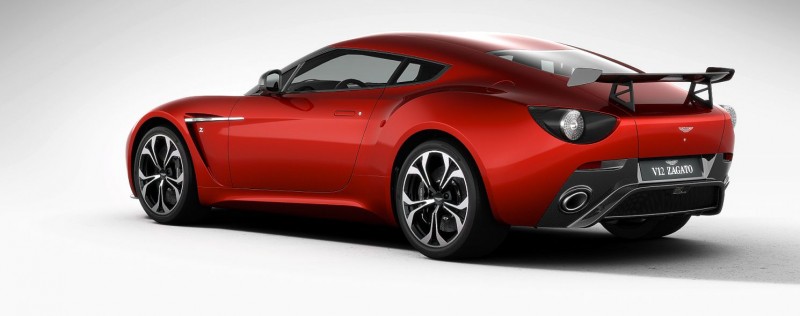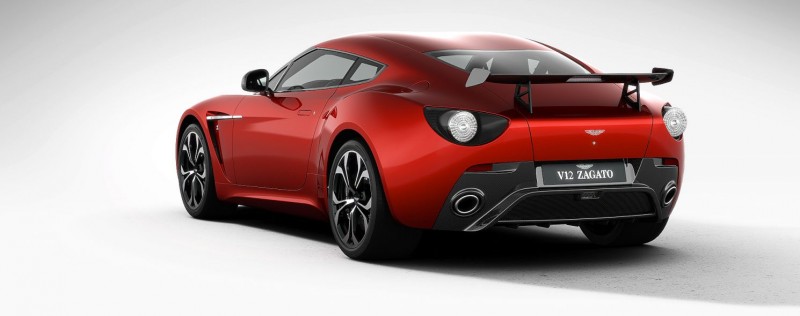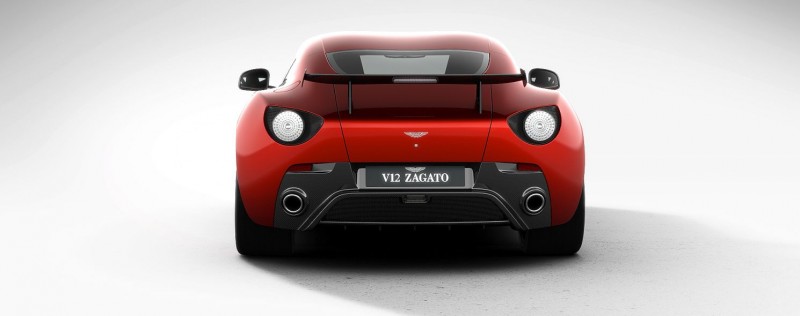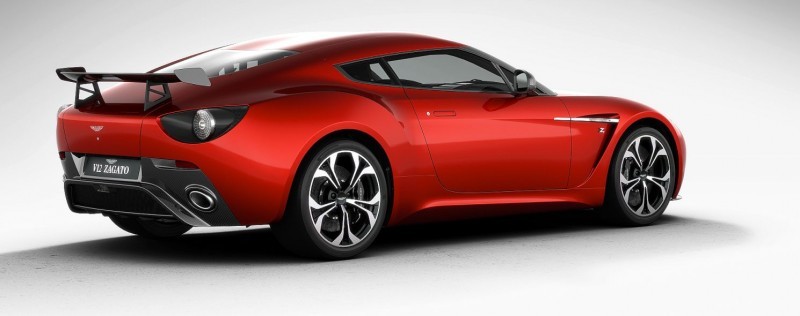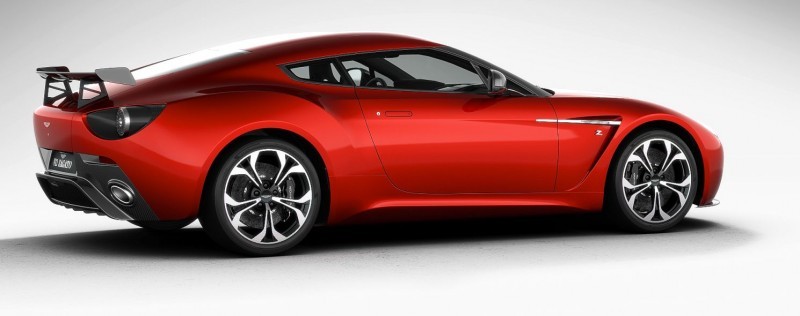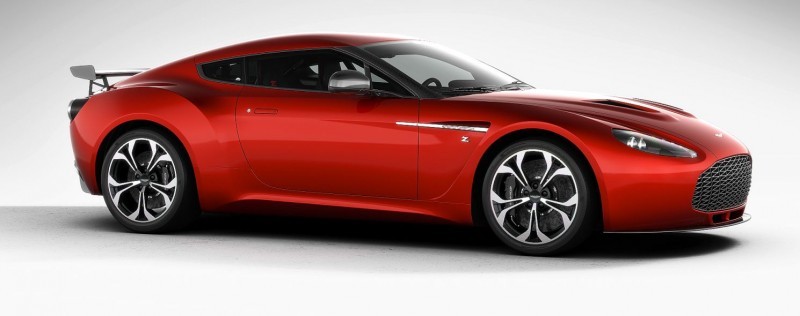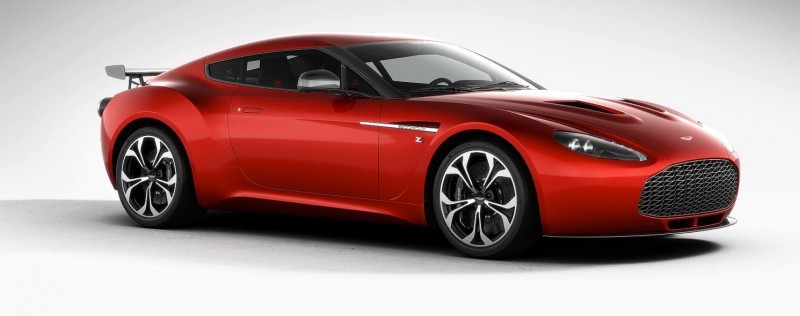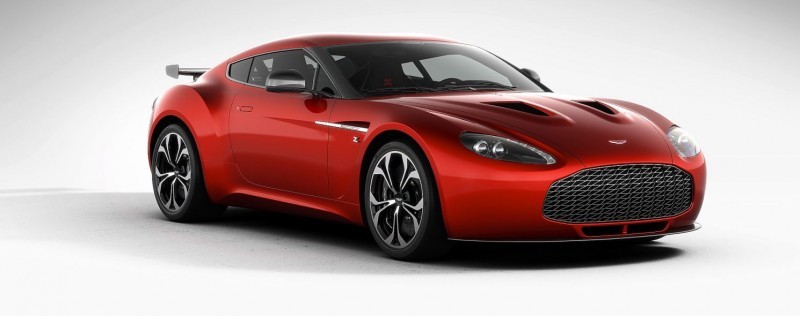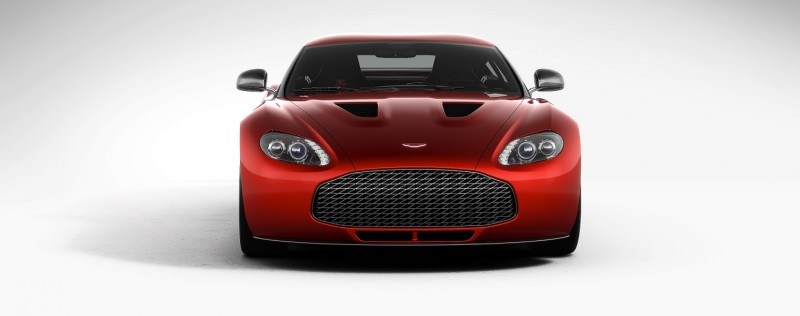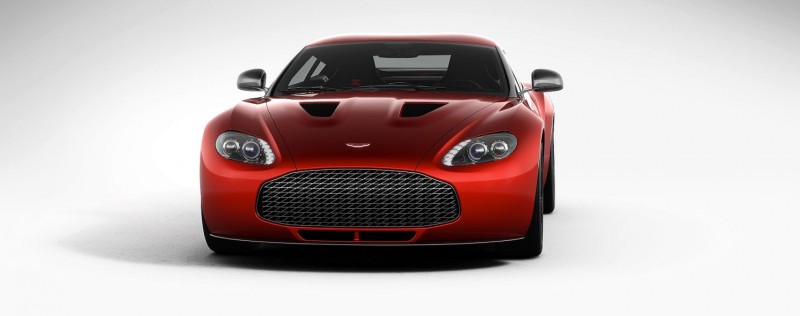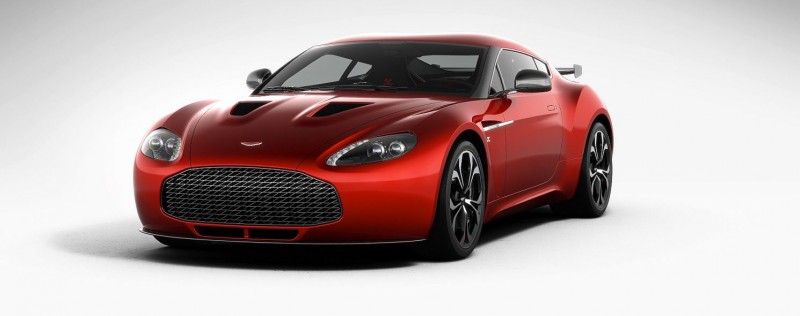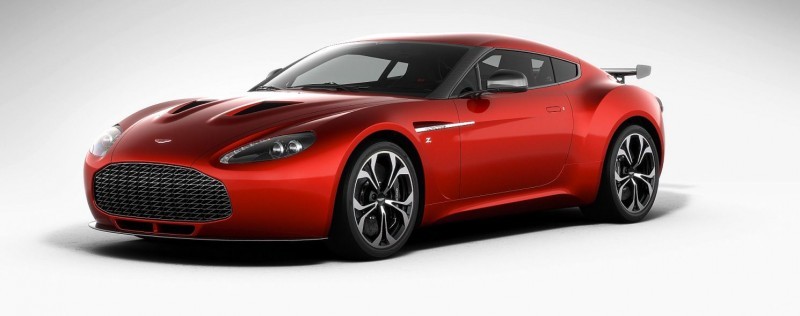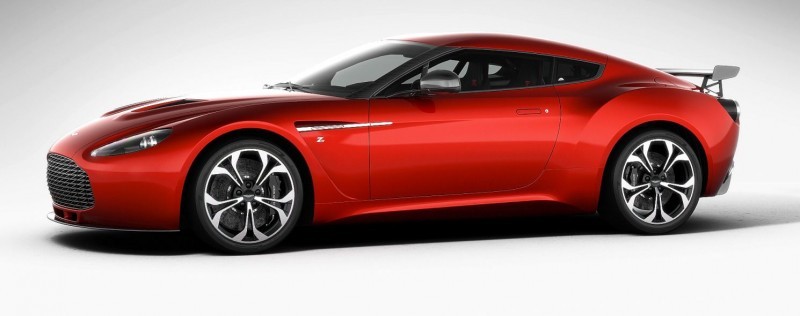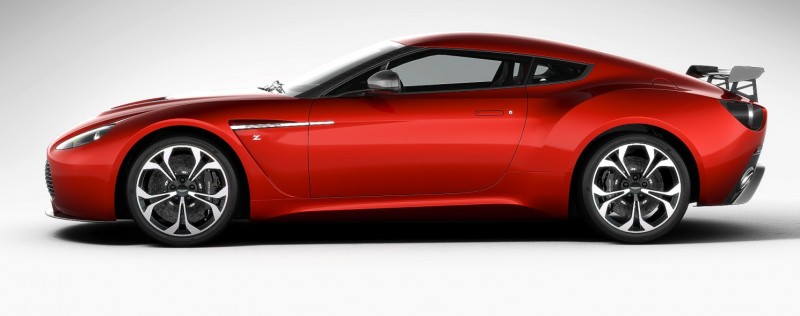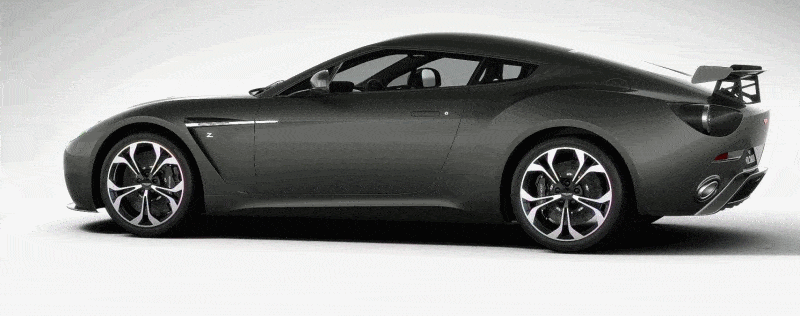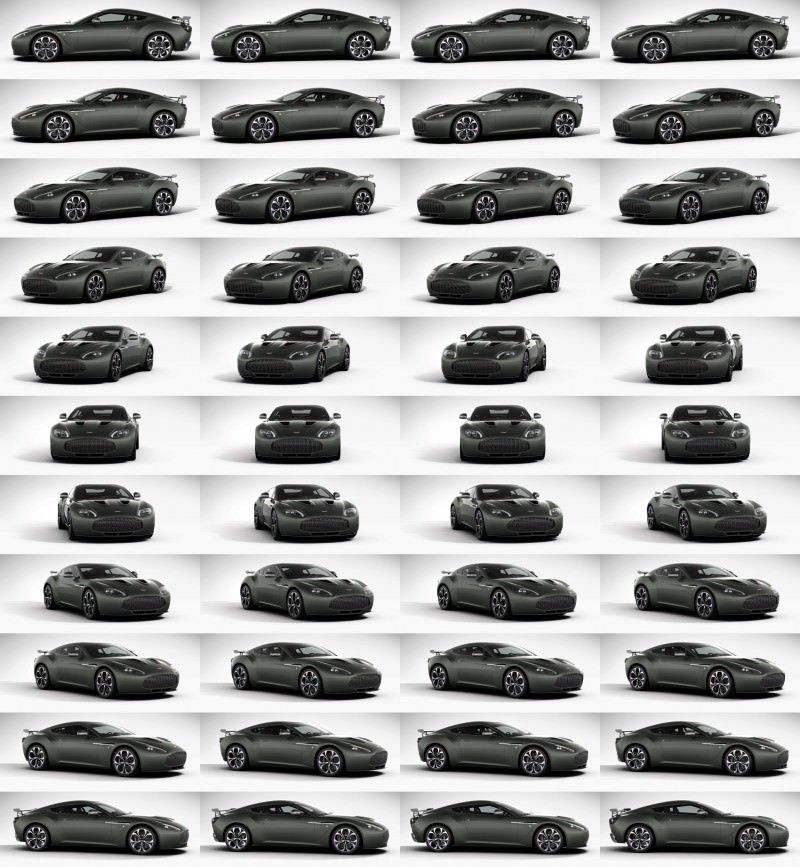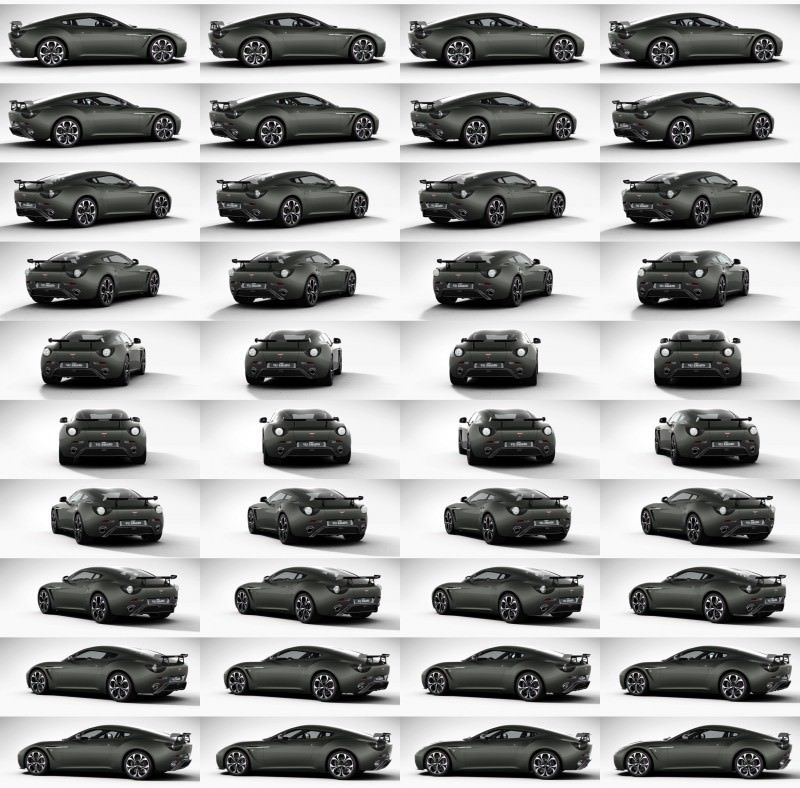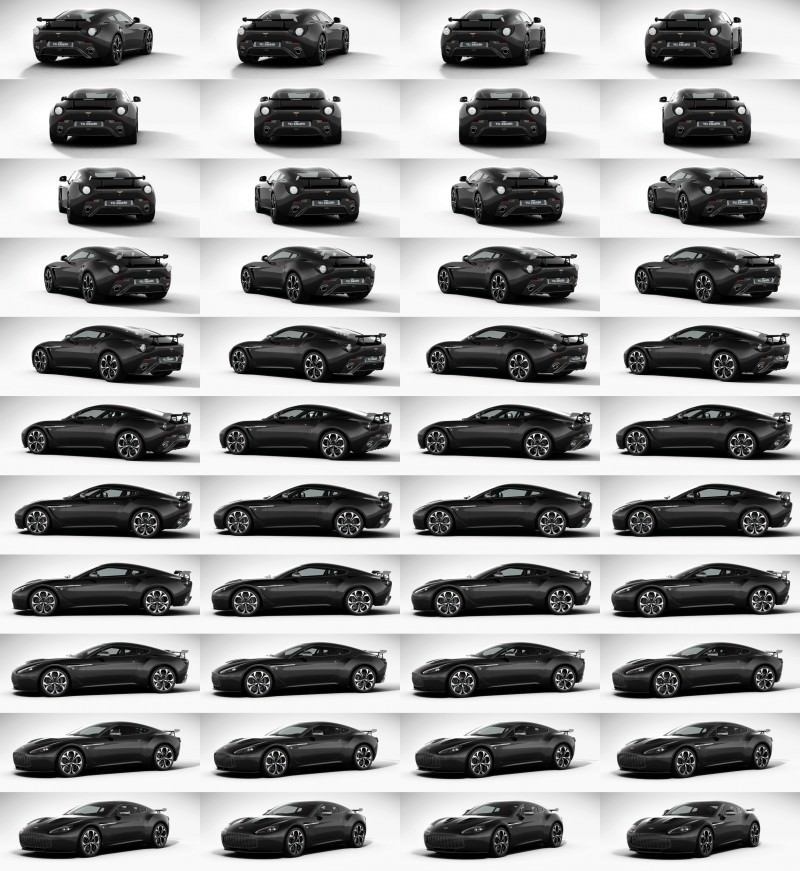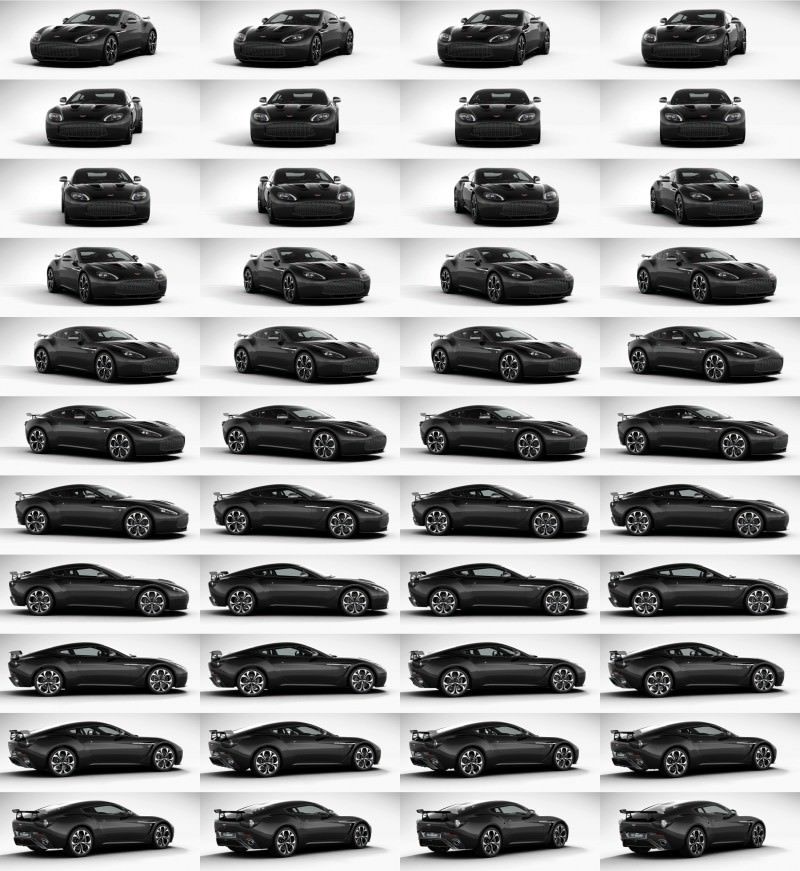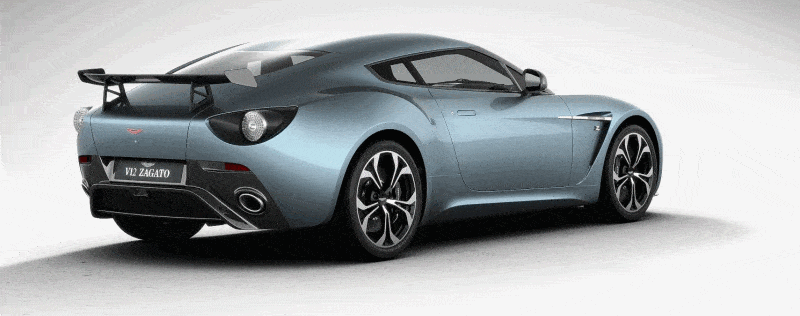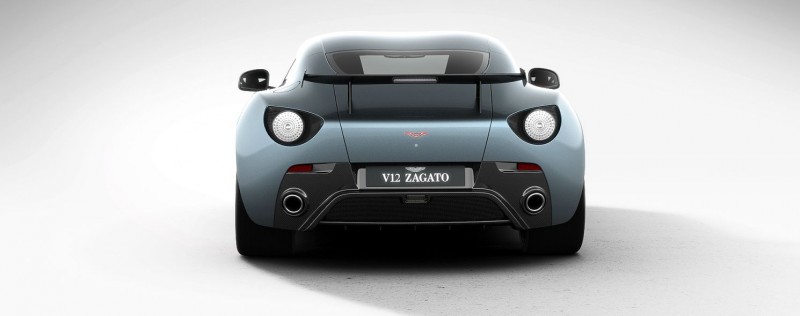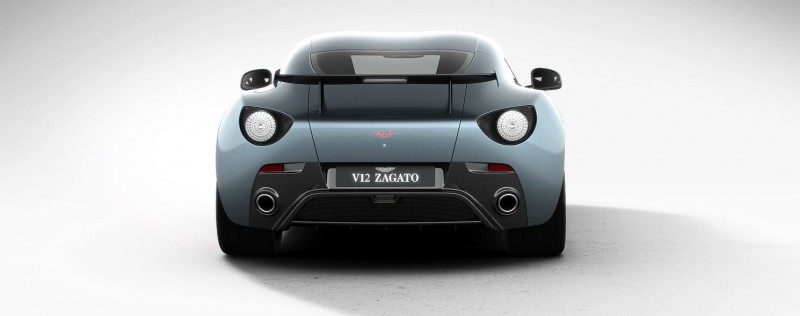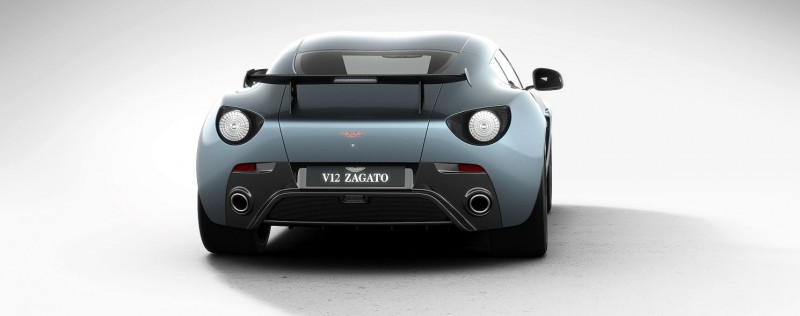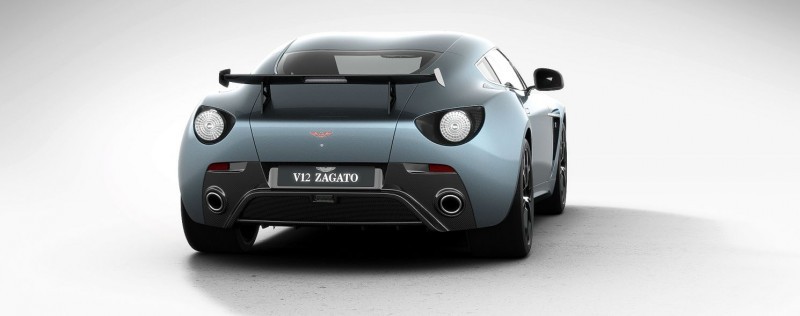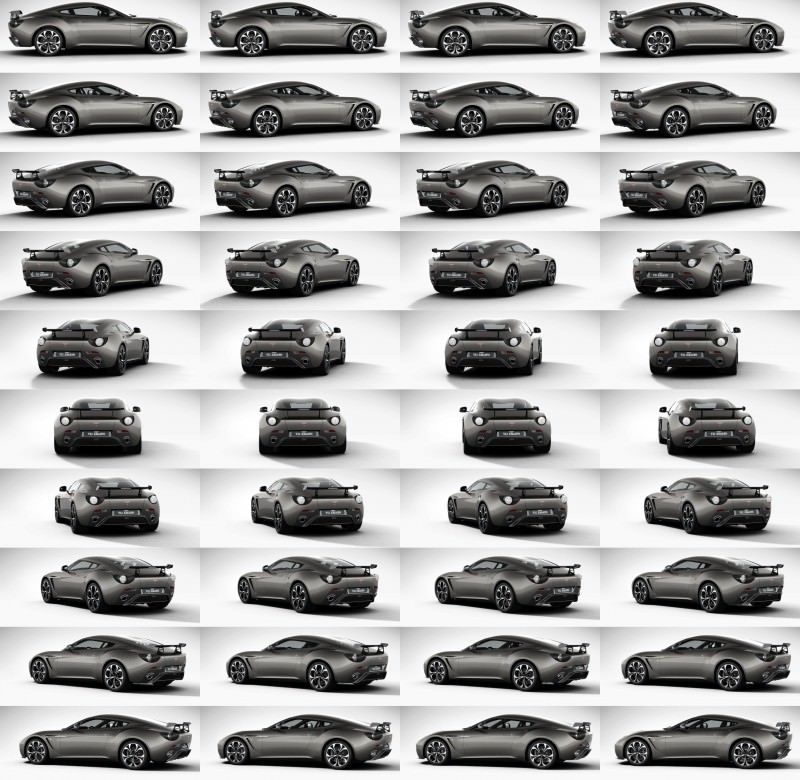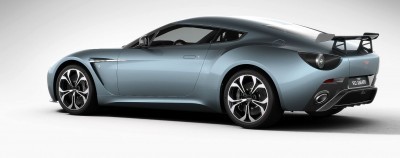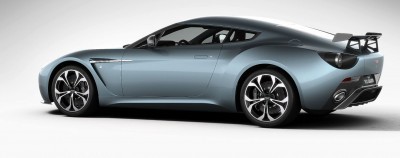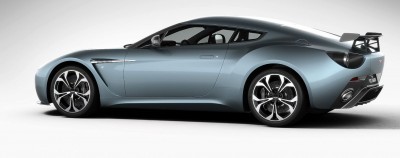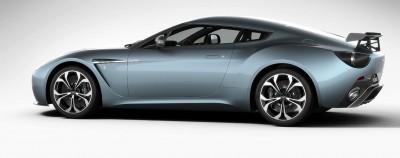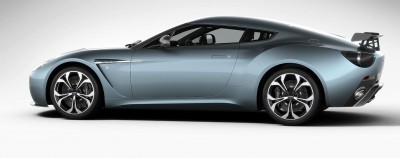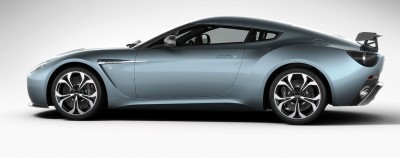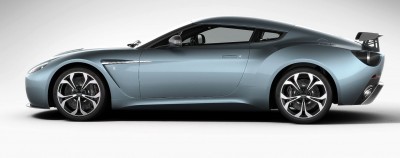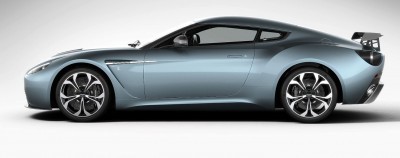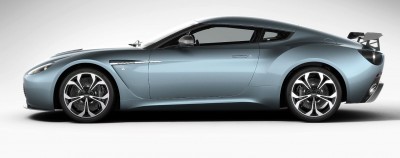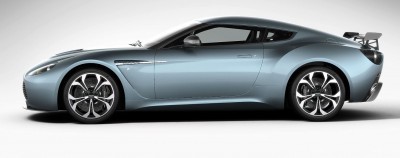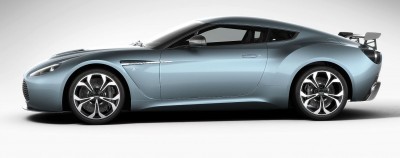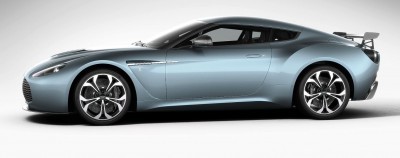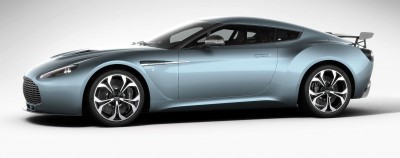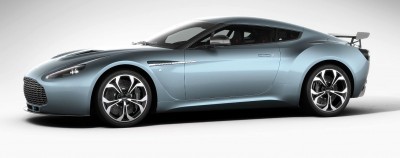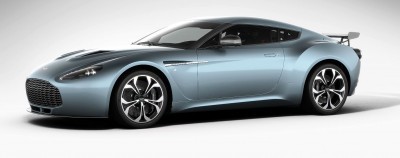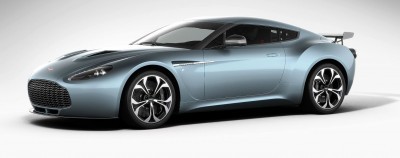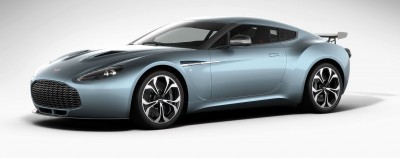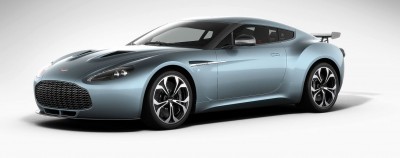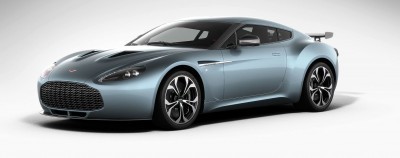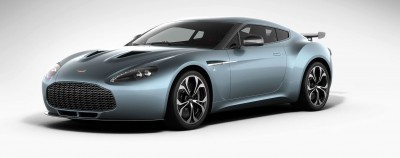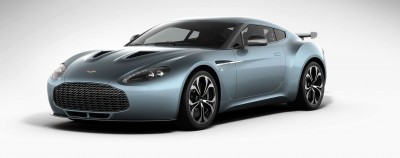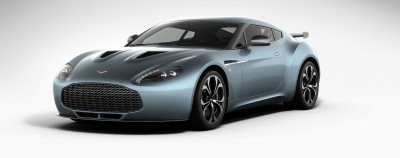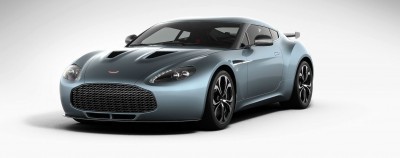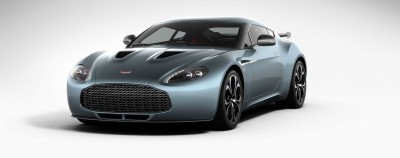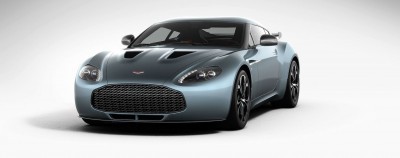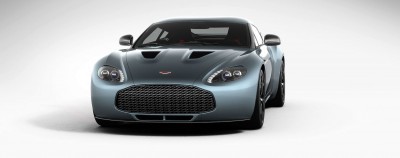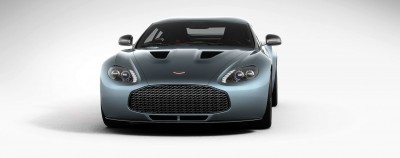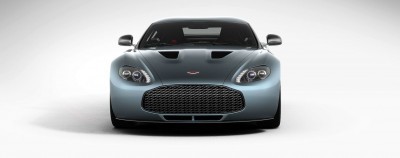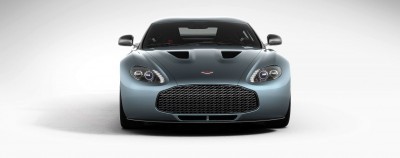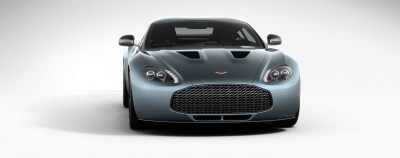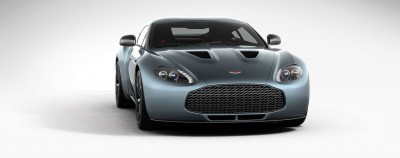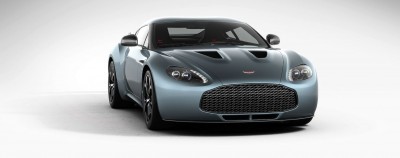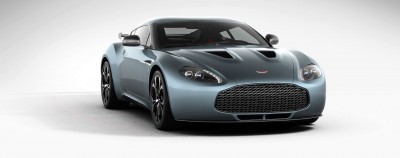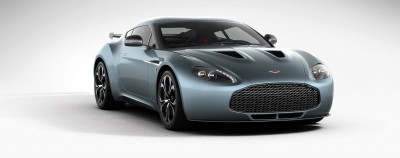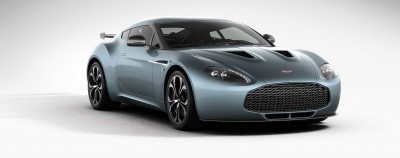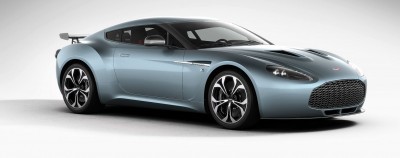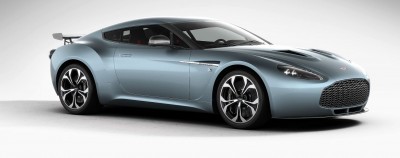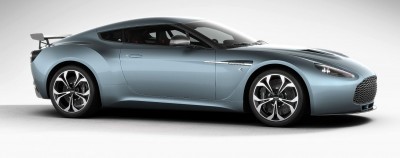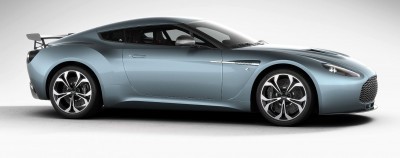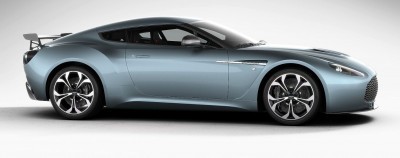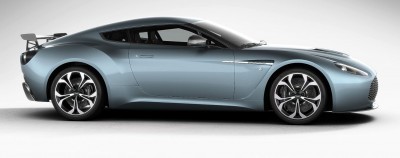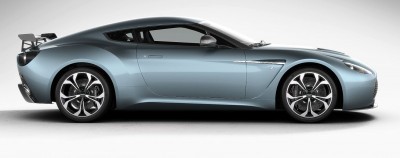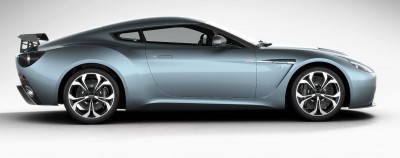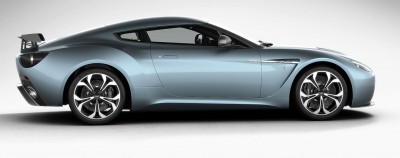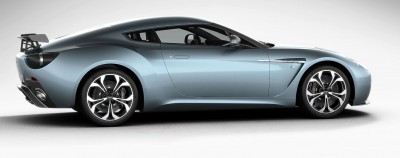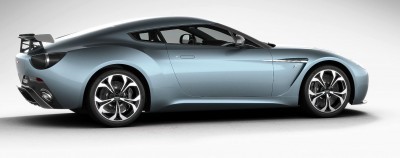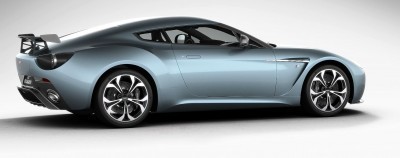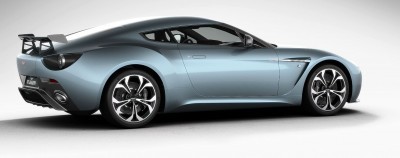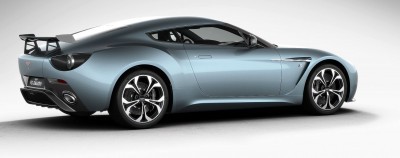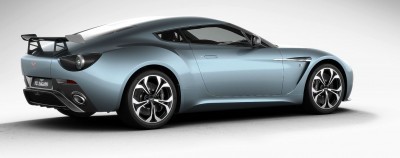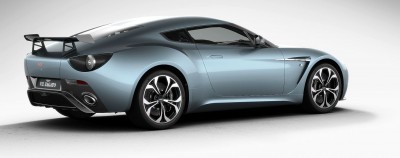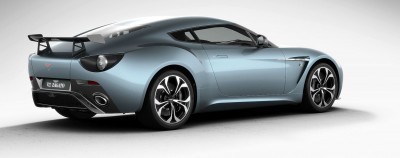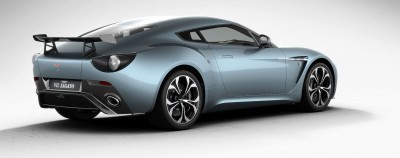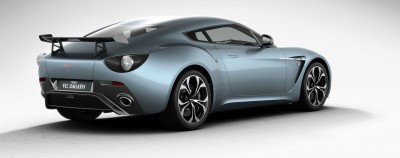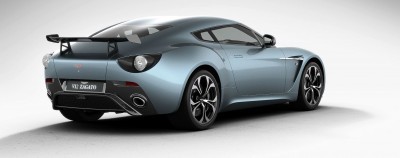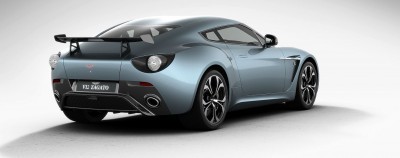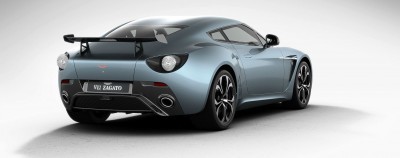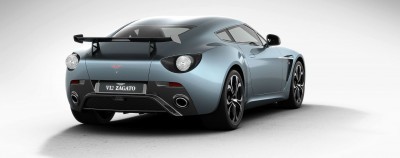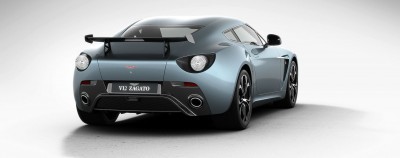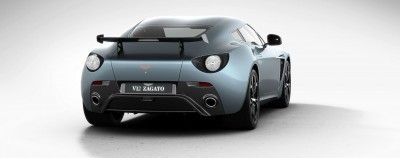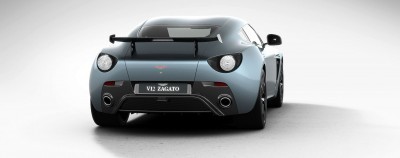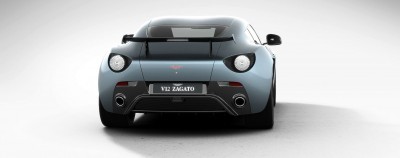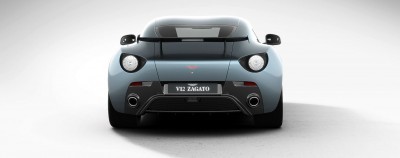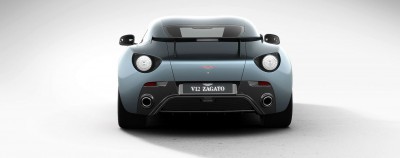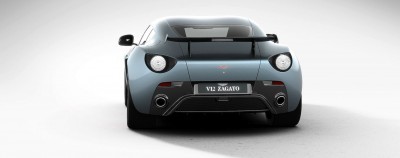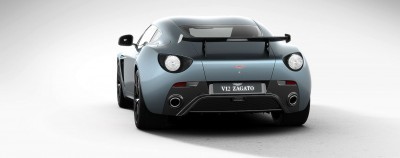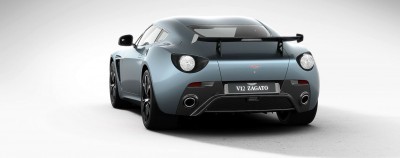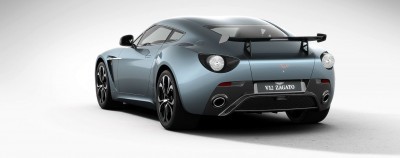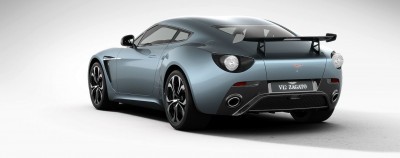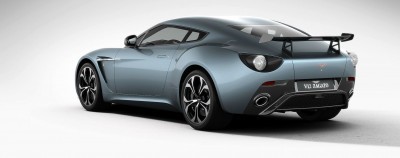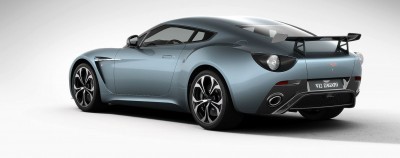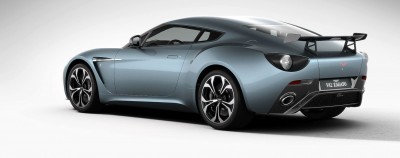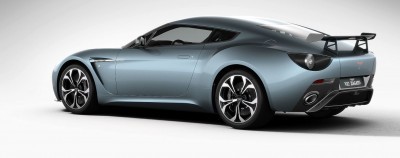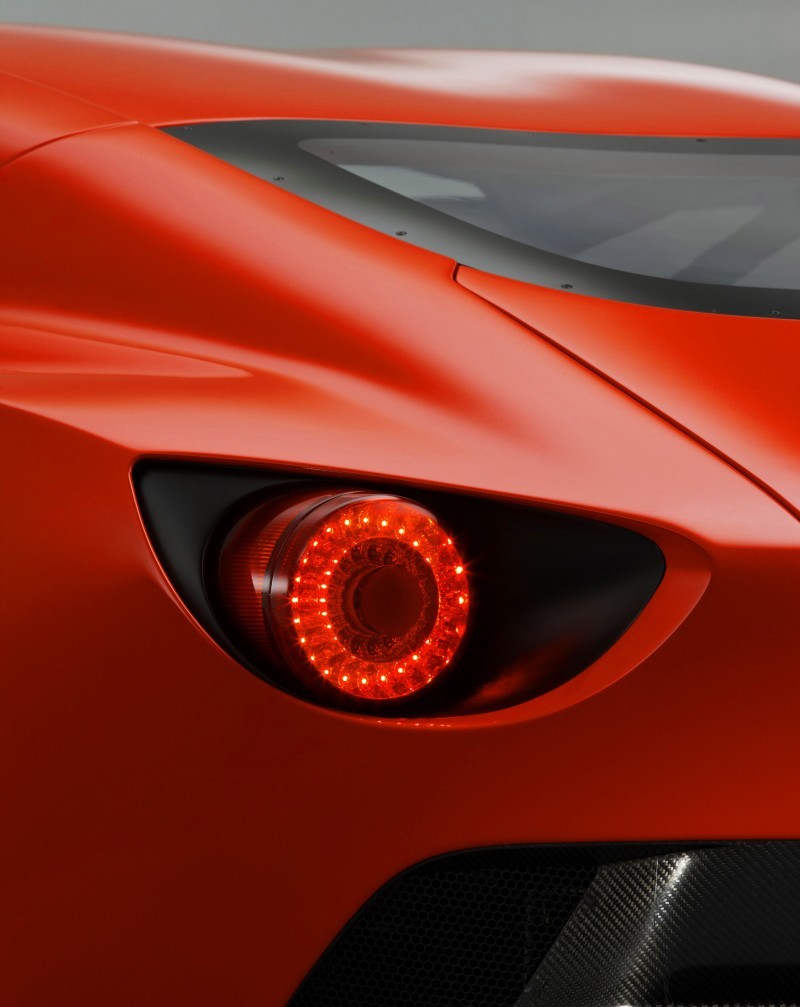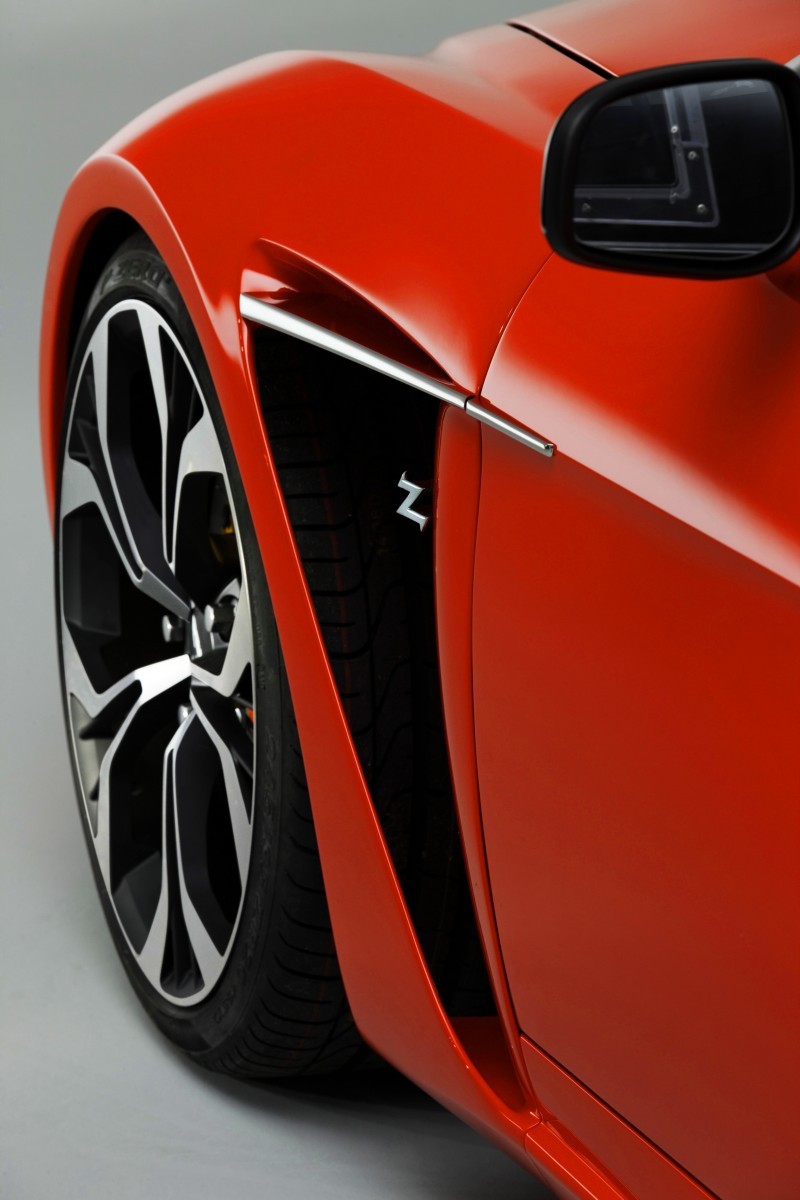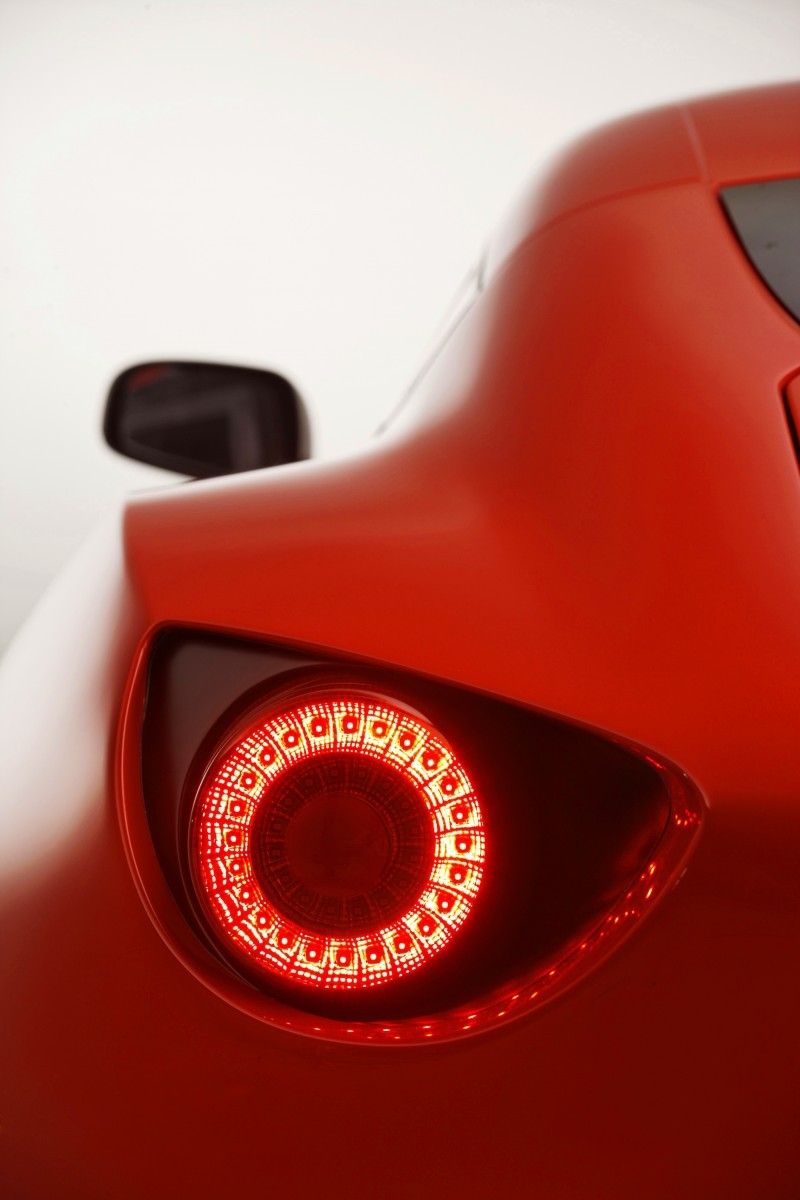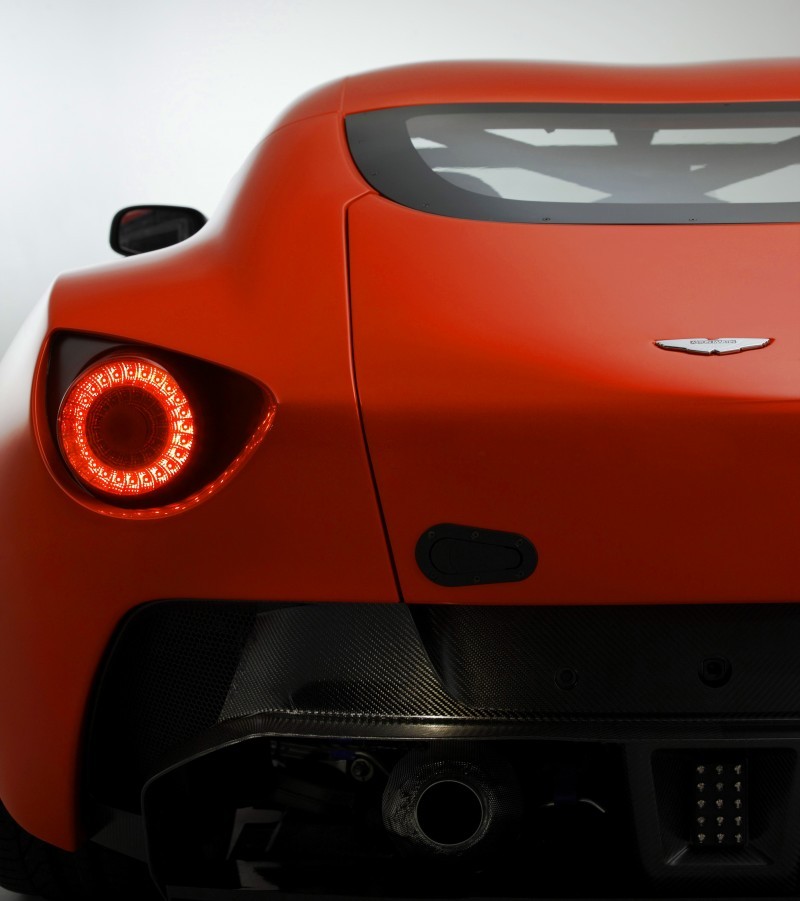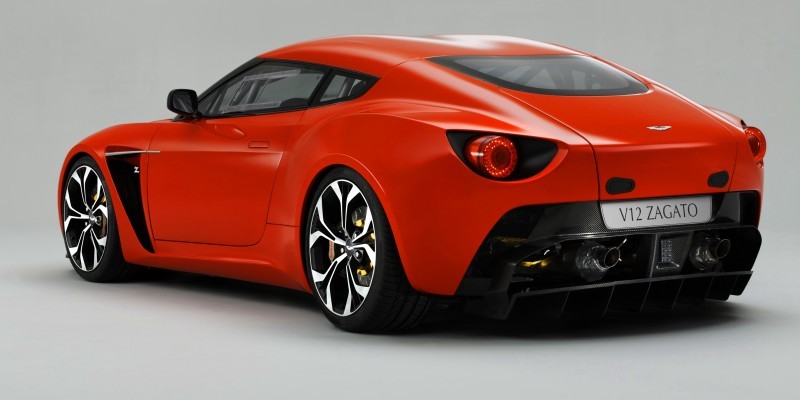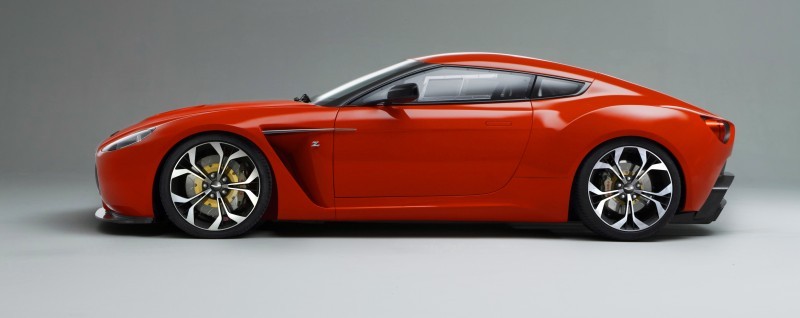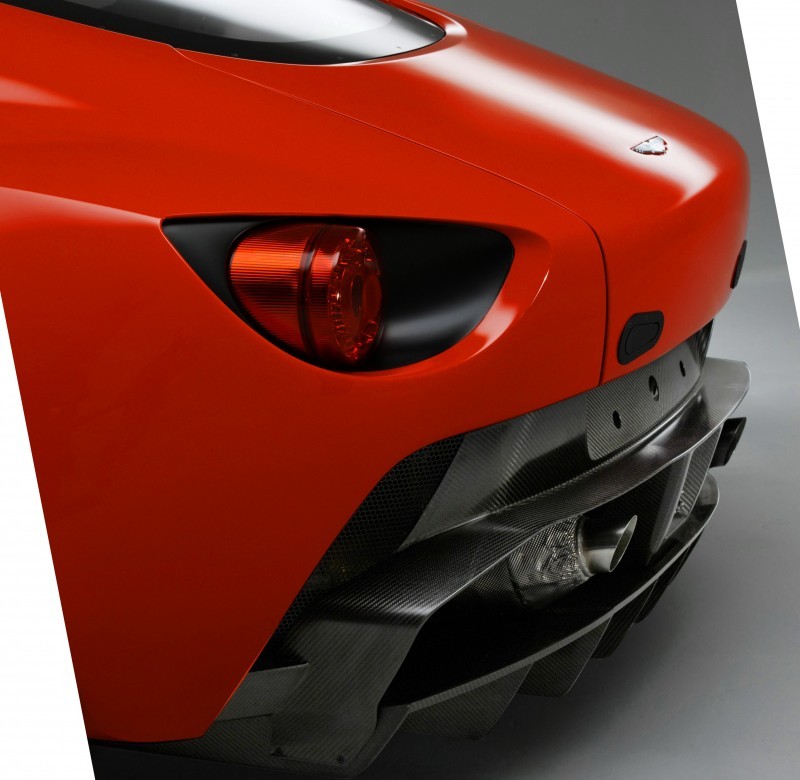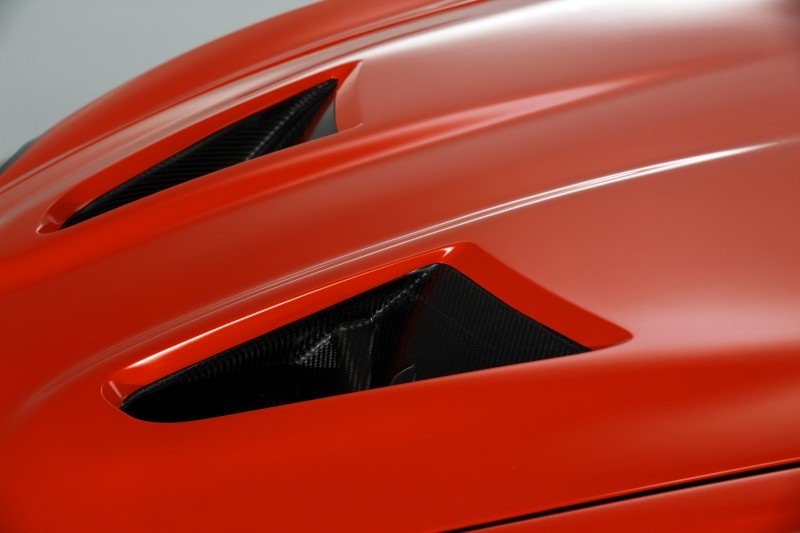THE WHO
Like many small British brands who shall not be named, Aston can feel a victim to its own design success, at times. The DB7 kick-started this modern styling vogue, which led smoothly to the 2000s Vanquish and DB9 and the modern range.
But sometimes what is needed is not evolution, but revolution. This latest safe-design kick is the blowback from Aston-Martin’s aggressive design flirtations in the 1970s and 1980s — cars like the Lagonda sedan and the Bulldog wedge concept were so ‘out there’ that they nearly bankrupted the company of customers and ideas. All while making the first Vantage – a car whose design is largely frozen in 1972 — the key model to maintain the company’s balance sheet and sales.
THE WHY
So the swing to relative conservatism in Aston’s design department is not without reason and prudence.
So, how to shake things up? Outside ideas are one way, and outside expertise in aerodynamic solutions and construction are another.
THE WHERE
Aston has a storied past with the Italian countryside — cars being driven down on factory panels and returning in lightweight alloys. Sounds like a lovely way to spend three months eating gelato and saying Ciao Bella as all the pretty ladies walk around the central piazza’s, no?
But serious demand for the Superleggera and Zagato remakes of Aston Martin sportscars have always made the trips profitable ventures. They profit the buyers by providing new ideas, and profit the company both financially and in terms of fresh intellectual capital.
THE HOW
The sports-car fabricators of Northern Italy are almost all staffed with full-bore, red-blooded Italians who seem to have the lightweight lap-time gracefulness in everything they do. This is just part of the culture here – as sing-song Ferrari and Lamborghini engines rip through the hillsides even today. In some other places, the local populace would complain about the noise.
Here? The sound of a V12 at redline is nearly the national anthem — and a source of as much or more pride among every resident. So to bring back some of that delicious ferocity to often-rainy England? What better souvenir!
THE WHEN
Zagato has been many things in is 95-year story, so far, but often the design wackery has taken root a bit too firmly. This is what we love Zagato for – running with a wild idea that others might have deemed too experimental, too polarizing, to make production.
Indeed, some of Zagato’s latest ideas are much more successful than others. None have met the same rapturous praise as the 2012-debuted V12Z for Aston. Such was the roar of appluase that the GT car inspired a road car concept. And the road car concept directly to a run of 150 of these Italian beauties for public sale.
The production run is nearing its capped maximum — so act now to secure your own example of this sure-fire future classic. This is bankable equity like no Libor-matched rate can ever guarantee. Short of the heavy caress of gold bars, no investment vehicle has ever been so attractive as the Aston Martin V12Z.
WHAT (THE WHAT)?
The car is available in five muted and demure colors: red, green, blue, grey and silver.
But the rear spoiler and extra-loud bark of the racing-fettled 510-horsepower V12 is sure to wake the neighbors — and perhaps even jumpstart your inner Italian braggadocio.
INTERIOR OPTIONS
EXTERIOR OPTIONS
EXTERIOR COLORS
DIAVOLO RED
ALLORO GREEN
CARBON BLACK
ALBA BLUE
SCINTILLA SILVER
Aston Martin V12 Zagato – Mechanical Specs
Performance
- Maximum power: 380 kW (510 bhp/517 PS) at 6500 rpm
- Maximum torque: 570 Nm (420 lb ft) at 5750 rpm
- Acceleration: 0-100 km/h (0-62 mph) in 4.2 seconds
- Maximum speed: 305 km/h (190 mph)
- Fuel Consumption: Litres/100 km (mpg)
- Fuel Consumption: Urban 24.3 (11.6)
- Fuel Consumption: Extra-urban 11.7 (24.1)
- Fuel Consumption: Combined 16.4 (17.3)
- CO2 EMISSIONS: 388 g/km

SUSPENSION
- Front: Independent double wishbones incorporating anti-dive geometry, coil springs, anti-roll bar and monotube dampers
- Rear: Independent double wishbones with anti-squat and anti-lift geometry, dual-rate coil springs, anti-roll bar and monotube dampers
Steering
- RACK AND PINION, SERVOTRONIC SPEED-SENSITIVE POWER-ASSISTED STEERING, 3.0 TURNS LOCK-TO-LOCK COLUMN TILT AND REACH ADJUSTMENT
- COLUMN TILT AND REACH ADJUSTMENT
Wheels and tyres
- Lightweight forged aluminium 19″ alloy wheels, unique for V12 Zagato
- Front tyres: Pirelli P Zero Corsa 255/35 ZR19
- Rear tyres: Pirelli P Zero Corsa 295/30 ZR19
- Front tyres: Pirelli P Zero 255/35 ZR19
- Rear tyres: Pirelli P Zero 295/30 ZR19
BRAKES
- Front: Ventilated carbon ceramic discs, 398 mm diameter with six-piston monobloc calipers
- Rear: Ventilated carbon ceramic discs, 360 mm diameter with four-piston monobloc calipers
- Dynamic Stability Control (DSC) with ‘Track’ mode
- Anti-lock Braking System (ABS)
- Electronic Brakeforce Distribution (EBD)
- Emergency Brake Assist (EBA)
- Traction Control (TC)
INTERIOR
- Zagato stitched logos and plaques
- Carbon-Fibre centre console finish
- Dual-stage driver/passenger front airbags
- Powerfold exterior heated mirrors
- Heated rear screen
- Automatic temperature control
- Organic Electroluminescent (OEL) displays
- Trip computer
- Cruise control
- Bluetooth® telephone preparation 1
- Satellite navigation system 1
- Rear vision camera
- Tyre-pressure monitoring 1
- Auto-dimming interior rear-view mirror
- Alarm (with volumetric and tilt sensor)
- and immobiliser
- Remote-control central door locking and
- boot release
- Glass ECU
- Tracking device (UK only) 4
Seats
- Electrically adjustable Sports seats with side airbags and three position memory OR
- Lightweight seats with six way electrical adjustment
IN-CAR ENTERTAINMENT
- 700 W Aston Martin Premium Audio System with Dolby® Pro Logic II®
- Integrated Apple iPod® connector 5
- USB connector with Waveform Audio Format (WAF), Windows Media Player
- (WMA) and MPEG (MP3) audio file compatibility
Dimensions
- Length 4385 mm (172.6″)
- Width 1865 mm (73.4″) excluding mirrors;
- 2022 mm (79.6″) including mirrors
- Height 1250 mm (49.2″)
- Wheelbase 2600 mm (102.4″)
- Front track 1570 mm (61.8″)
- Rear track 1575 mm (62.0″)
- Turning circle 11.8 m (38.7 ft) (kerb to kerb)
- Boot capacity 300 litres (10.6 cu ft)
- Fuel capacity 80 litres (17.6 UK gal/21.1US gal)
- Estimated Kerb weight 1680 kg (3704 lb)

The New Aston Martin V12 Zagato
With the final design signed-off and engineering development work progressing apace, Aston Martin today reveals the first images of the new V12 Zagato (road car) scheduled for production later this year.
The V12 Zagato is the pinnacle of the Vantage range. It is also the latest expression of a successful creative collaboration that has given rise to a series of striking GT cars over the last half-century, the original and most iconic of which being the DB4GT Zagato. Not only does this masterpiece rank amongst the most desirable, collectable and valuable cars in history, its 50th anniversary provided the inspiration for the V12 Zagato.
Though commemorating a great Aston Martin of the past the V12 Zagato could be no mere pastiche of the original. Instead the project was seen as the perfect opportunity to take Aston Martin’s ethos of technology and tradition to a new and exciting level. To this end the V12 Zagato combines the modern ideas, materials, processes and technology pioneered on One-77, while remaining true to the purity and craftsmanship of its illustrious forebear.
For Aston Martin’s CEO, Dr Ulrich Bez, the V12 Zagato is “a celebration of both Aston Martin’s heritage and its future”. He continues: “Our relationship with Zagato stretches back more than 50 years. Together in that time we have created a series of very special cars. The first – the DB4GT Zagato – is a true icon: fast, beautiful and incredibly desirable. In the V12 Zagato I believe we have captured the spirit of that car and combined it with a confident twist of modernity to give it a character all of its own.”
Initial design concepts for the V12 Zagato were explored in early 2010. Inspired by Zagato’s bold and individual styling signatures Aston Martin’s Director of Design, Marek Reichman, and his Gaydon-based design team relished the challenge of shaping the V12 Zagato, creating a car that pushes the boundaries of Aston Martin’s design language, yet pays tribute to the DB4GT Zagato. Demonstrating Aston Martin’s ability to rapidly bring ideas to fruition the Zagato programme quickly gained momentum, the design team working hand-in-hand with engineers and artisans to complete the build of a pair of concept cars in the spring of 2011.
May 2011 saw the V12 Zagato make its world debut at the prestigious Villa d’Este concours. Entered in the Concept Cars and Prototypes class, the V12 Zagato wowed the judges and the crowd, taking first place against impressive opposition. In June the Villa d’Este winner – along with the second prototype car – made the V12 Zagato’s world racing debut at the gruelling 24 hour endurance race held at the Nürburgring. Both cars completed the ultimate durability test, continuing Aston Martin’s 100 per cent finishing record in this notoriously tough race.
After an overwhelmingly positive response from customers, the decision was made in July 2011 to build a strictly limited run of V12 Zagatos. Since then, Aston Martin’s design team have worked to refine the sports car’s detailing and aerodynamic performance while staying faithful to the original design concept. At the same time engineers based at Gaydon have been putting prototypes through the company’s rigorous development programme to ensure the V12 Zagato performs as well as it looks.
Every Aston Martin is a unique combination of advanced materials, technology and time-honoured craftsmanship. The V12 Zagato takes this philosophy to a level previously seen in the company’s exquisite One-77 supercar, which completes its build run this year. Built at Aston Martin’s global headquarters in Gaydon, Warwickshire, production of the V12 Zagato will be strictly limited to no more than 150 cars.
Creating each V12 Zagato is a painstaking process that takes approximately 2,000 man-hours to complete. Just like the One-77, the V12 Zagato is constructed from a combination of hand crafted aluminium and carbon fibre. The bonnet, signature ‘double-bubble’ roof and doors are hand-crafted aluminium, while the front and rear fenders, door sills and boot lid surround are made from carbon fibre.
The finished body is then painted in the same dedicated area as the One-77. Four unique colours have been created for the V12 Zagato: Scintilla Silver, Alloro Green, Alba Blue and Diavolo Red. The painting process alone takes some 100 hours to complete and is followed by the marriage of the body and the drivetrain within the sports car production area. From there the V12 Zagato is transferred to the standalone facility originally built to house One-77 production, where the build is completed.
This serene, laboratory-like space is perfectly suited to the task of creating special cars such as the V12 Zagato. It is here that time is lavished upon the fitment and installation of an array of bespoke components, including the side glass and the distinctive rear window, which features a curved surface that continues the sculptural lines of the ‘double-bubble’ roof. All the exterior brightwork around the windows has a contemporary black finish to compliment the exposed carbon fibre components. Fitment of the hand-crafted interior and upholstery is also completed in this dedicated build area.
Like all Aston Martins when viewed as a whole the V12 Zagato is an artful composition of powerful lines and compelling proportions, but when viewed up close it reveals sophisticated, sculptural surfaces and jewel-like details. The exposed elements of carbon fibre on the front splitter, A-pillars, rear lamp pods, diffuser, door mirror cases and rear wing all display the same perfectly symmetrical weave and smooth resin finish. Likewise the bold new grille is formed in a unique three-dimensional composite material mesh that echoes Zagato’s famous ‘Z’ moniker.
More delights are found inside. Seven Bridge of Weir hides – in semi-aniline finish to offer durability while preserving the natural texture of the leather – are used to trim the V12 Zagato’s interior. Hand-stitched quilting of a unique design creates a flowing pattern that evokes a dynamic sense of movement across the seats and headlining, while ‘Z’ embroidery in the headrests and rear parcel shelf add a further flourish. Satin-finish carbon fibre on the dashboard and centre stack is perfectly complimented by piano black accents and satin black rotary switchgear. Carbon fibre sill plaques with ‘V12 Zagato’ inlaid metal script provide a distinctive finishing touch.
A work of art built by skilled craftsmen to be driven and enjoyed by the world’s most discerning car collectors, the V12 Zagato is a fitting tribute to its illustrious ancestor. On-sale now priced at £330,000 (plus local taxes) the production specification V12 Zagato will be showcased at the Geneva Salon International in March 2012. First deliveries are scheduled for Autumn 2012.
http://www.astonmartin.com/en-us/cars/aston-martin-v12-zagato/v12-zagato-specification

Tom Burkart is the founder and managing editor of Car-Revs-Daily.com, an innovative and rapidly-expanding automotive news magazine.
He holds a Journalism JBA degree from the University of Wisconsin – Madison. Tom currently resides in Charleston, South Carolina with his two amazing dogs, Drake and Tank.
Mr. Burkart is available for all questions and concerns by email Tom(at)car-revs-daily.com.

